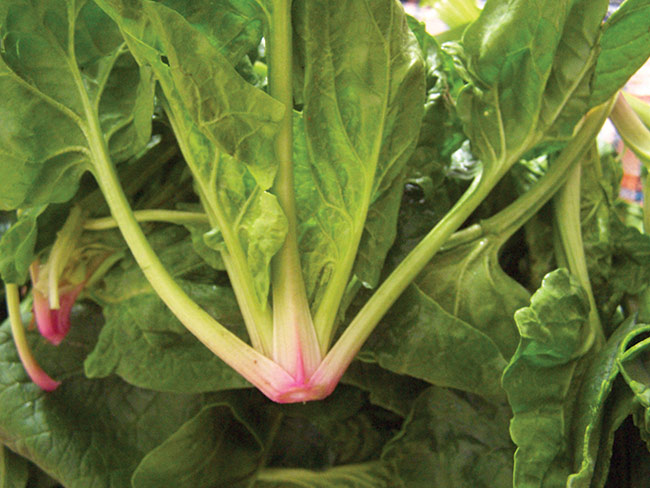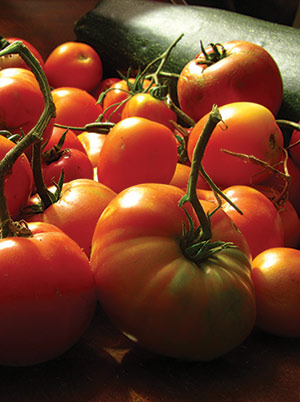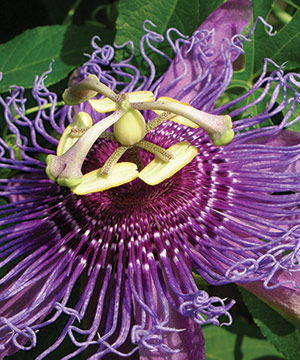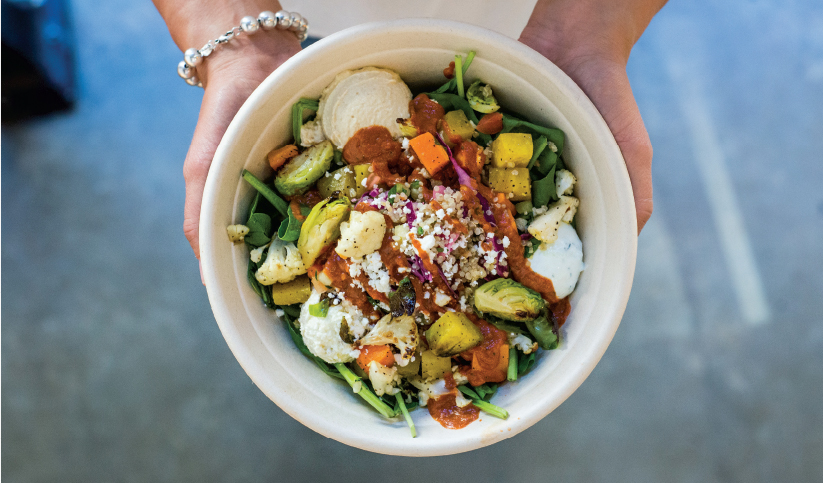
Garden to Table
Turn your yard into a gorgeous, edible oasis this spring.
-
CategoryUncategorized
-
Written byYsanne Spevack
One of the greatest pleasures of Valley living is our ability to grow delicious edibles. We have the space and the sun. And May is the perfect time to get started.
Soil Prep
Plant in good, well-drained organic soil mix. Never put anything edible straight into the ground, as Valley soil is not low-grade and devoid of nutrients. I particularly like E. B Stone’s Flower & Vegetable Planting Mix and Gardner & Bloome’s Planting Mix. If you buy in bulk, order Premium Vegetable Soil Mix from Agromin in Camarillo.
Amend soil with organic compost, manure or fertilizer. Only choose soil amendments from organic sources, especially manure.
Mulch
Topping soil with a good, thick layer of organic mulch will protect against the searing sun and chilly evenings. By mulching, you can also feed your plants. Any brown, organic matter will work, from dead leaves to wood shavings. Try a two-inch layer of alfalfa animal feed from your pet store. Plants love nothing more than living in decaying matter, so keep fallen leaves and layer them at the base of plants.
Greens
There’s still just enough time to get heat-tolerant greens from seed into the ground. The goal is to get them mature enough to handle the heat when it arrives. Come mid-summer, lettuces will wilt and kale will get diseased, but heat-loving greens –like New Zealand or Malabar spinach and mache— will keep producing.
 Tomatoes
Tomatoes
May and June are a great time to plant seedlings from the nursery.
My current favorite heirloom varieties are Genovese, Hillbilly and Chocolate Stripes, all of which have a luscious taste and are fairly hardy for heirlooms. But if a large yield is important to you, stick with standard varieties (Early Girl, Beefsteak, Roma, etc.) or go with cherry tomatoes, like the ever-popular Sweet 100, Chocolate Cherry and Yellow Pear varieties.
Cut back suckers (the little branches that sprout out of the junctions between the stem and leaves.) The plant’s energy is wasted on these excess branches that lead to nowhere and that instead can be diverted back into producing fruit. Pinch out at the base.
To feed tomatoes, work an organic fertilizer into the soil at the base of plants and spray the leaves with compost tea. To make compost tea, buy Bu’s Blend compost tea bags, fill a metal trashcan with water and steep the tea bags in the sun for a week. Fill a spray bottle and spritz the fruit and leaves liberally, preferably at dusk.
Flowers
Edible flowers attract “good” bugs like bees and ladybugs and add flavor and interest to food. Sow nasturtium seeds now for delicious, peppery flavored flowers and sunflower seeds for gorgeous blooms and tasty seeds. For cutting flowers that double as good bug attractors, sow colorful strawflowers and charming bachelor buttons. Remember to deadhead to encourage fresh blossoms.
 Exotics
Exotics
Edible gardens should also be a place of beauty and a sanctuary. So have a little fun with design. Plant seeds from unusual varieties like the bean. There are thousands of beautiful varieties of seed available online—from bush to pole. One of my favorites is the red noodle bean, an Asian variety that thrives in the Valley. Long, slender pods contrast with green, heart-shaped leaves to create a real “wow” factor.
Or try the passionfruit. They are prolific and exotic, and their sprawling vines
Ysanne Spevack is head organic vegetable gardener for The Ranch in Malibu. She also creates and maintains gardens at private homes. For more, go to organicfoodee.com.











